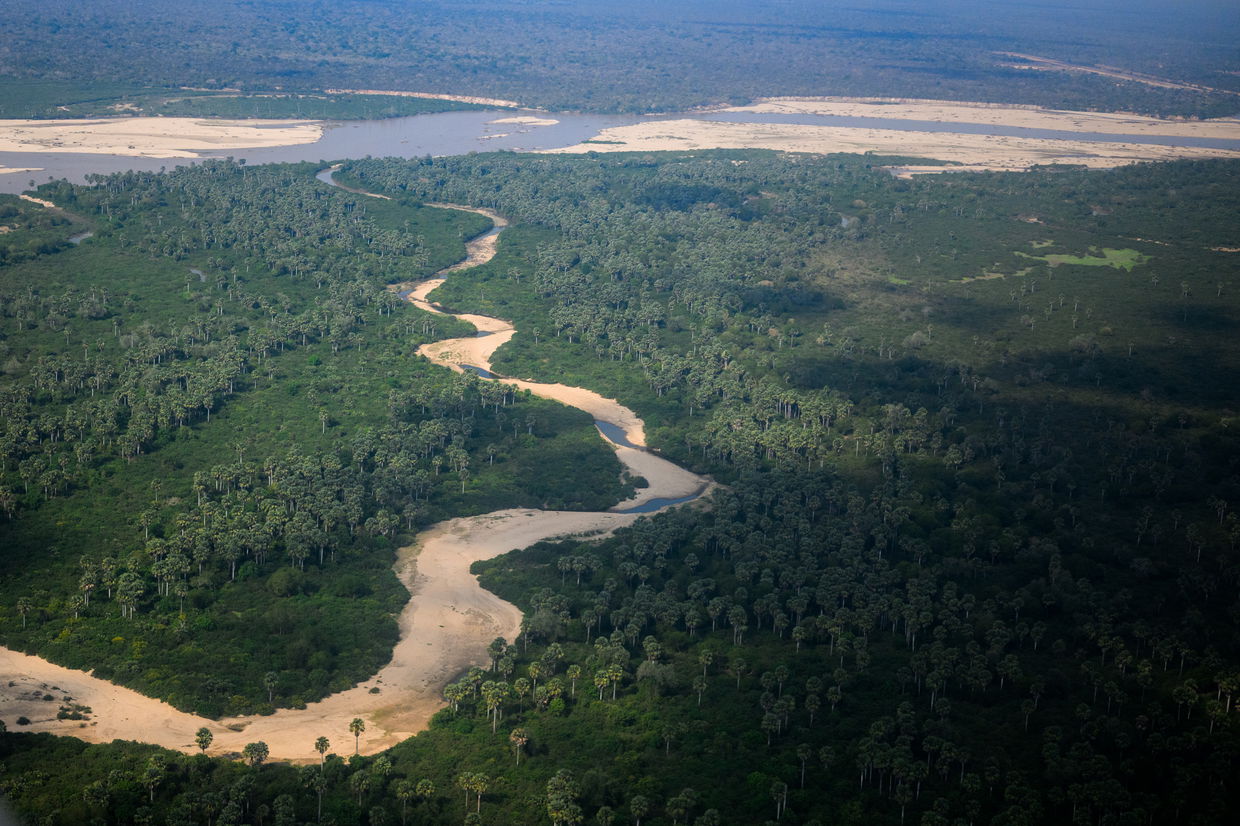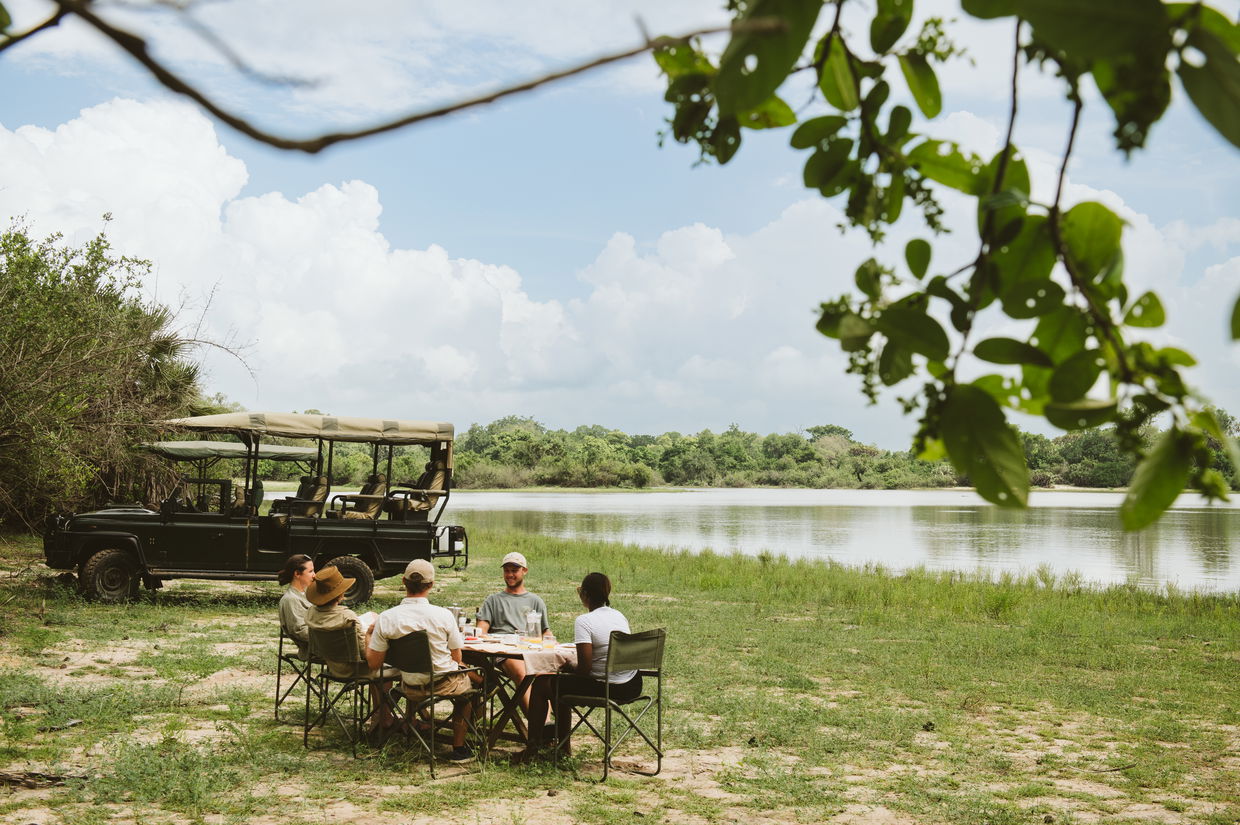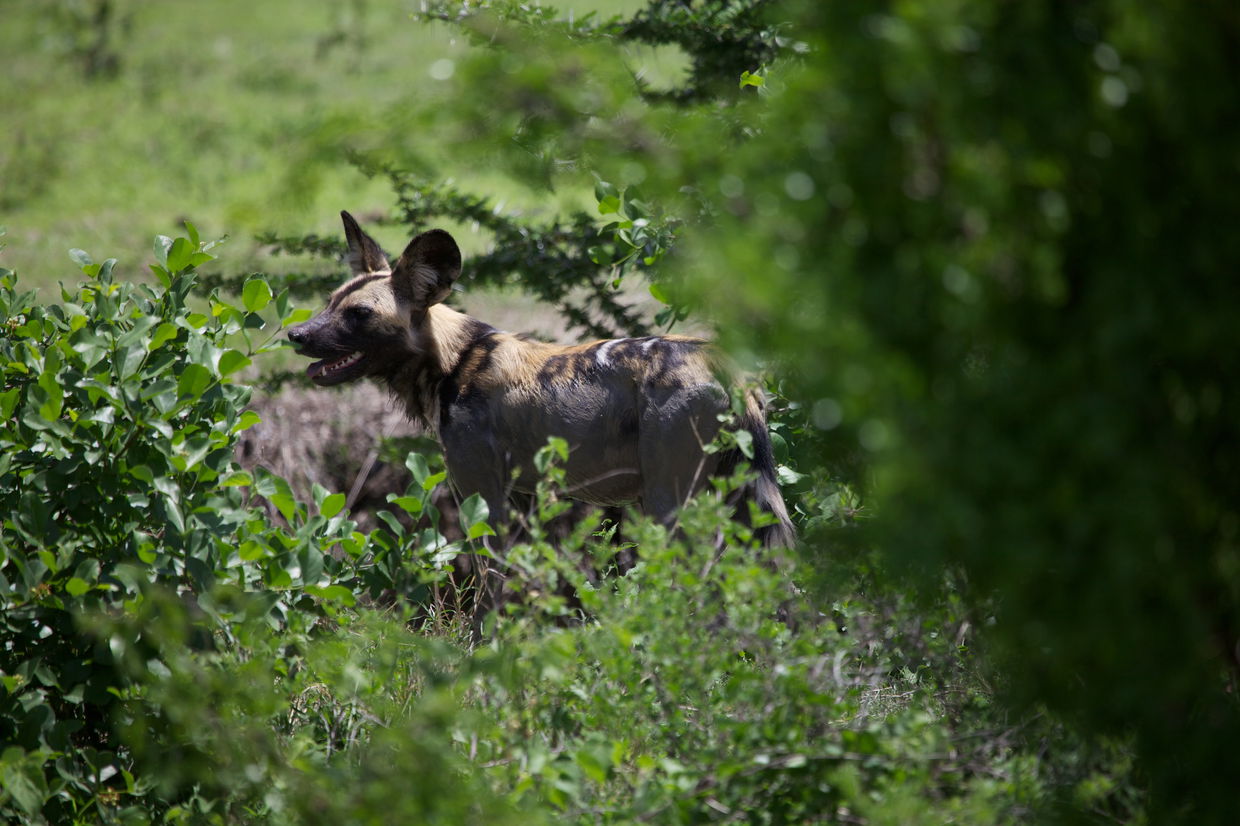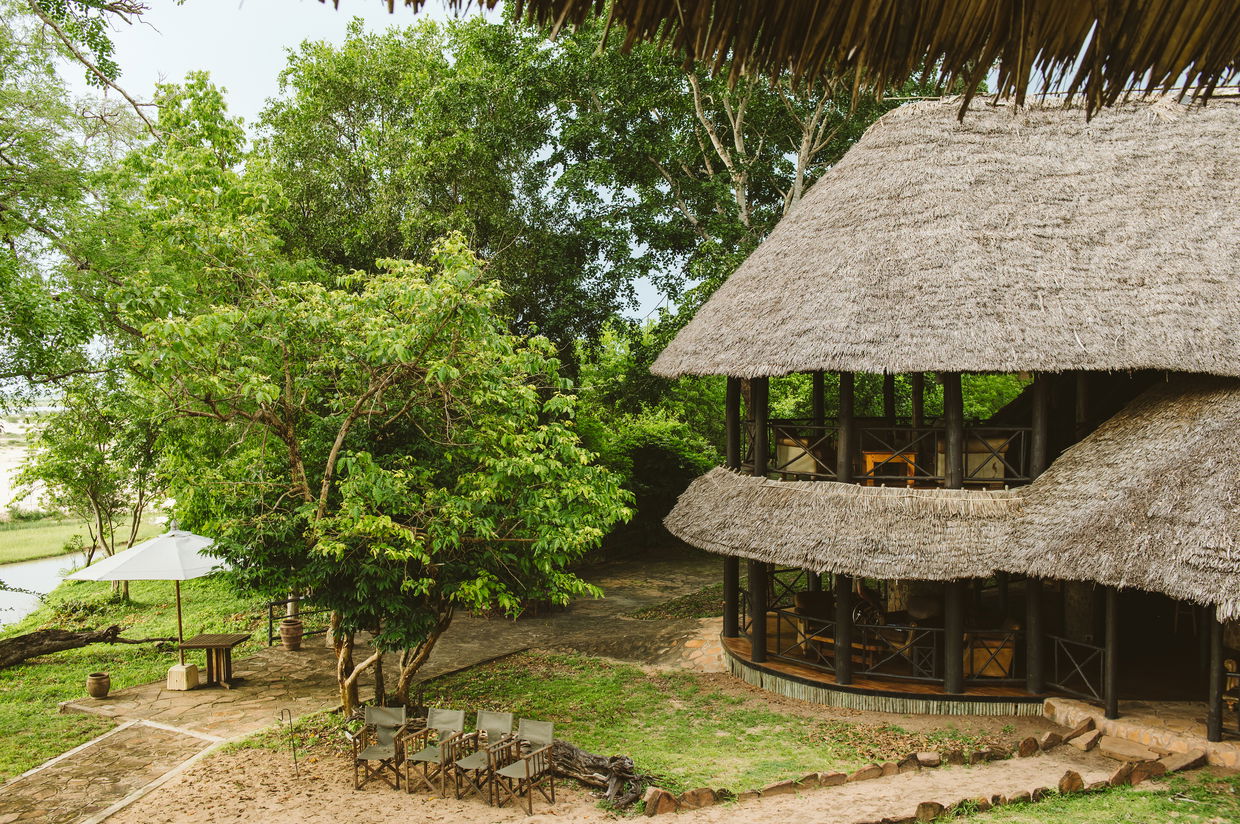Far removed from the trodden tyre tracks of more frequented national parks and safari camps, I'm wallowing in the private plunge pool of our spacious Meru-style, tented suite at Katavi Wildlife Camp, indulging in a moment of solitude. Or so it seems. The silence is punctuated by the unmistakable sound of cracking branches, which signals that elephants are on my doorstep.
Boat rides and walking safaris along the Rufiji River

The Rufiji River carves its way through Nyerere National Park for some 600km before flowing into the Indian Ocean – shaping the landscape and unfurling with each tributary. Gliding upstream from Rufiji River Camp, along Tanzania’s largest riverine ecosystem in a flat-bottomed boat, offers a wildlife experience entirely different from a game drive.
The Rufiji River carves its way through Nyerere National Park for some 600km before flowing into the Indian Ocean – shaping the landscape and unfurling with each tributary. Gliding upstream from Rufiji River Camp, along Tanzania’s largest riverine ecosystem in a flat-bottomed boat, offers a wildlife experience entirely different from a game drive.
For an idea of its size, the Rufiji’s catchment basin stretches over 177 429 km2 and collects around a third of Tanzania’s rainfall. During the long rainy season, the river level fluctuates and overflows into seasonal lakes. Life in the national park revolves around its ebb and flow, and the widening and narrowing of its waterways. Wildlife innately understands this watery timeline.

At twilight, the riverbank erupts in a soundtrack of rustling reeds, splashing water, air bubbles, and a chorus of bird calls from more than 440 species. Kingfishers pin-drop into the water and herons stand sentinel in the shallows as carmine bee-eaters announce their return to their nest holes burrowed into vertical cliffs.
Water safaris allow you a closer look. Watch hippos bare their incisors during a mock yawn before sinking below the waterline, crocodiles slither into the water, and buffalos appear and disappear between the grass like watercolour apparitions. Monitor lizards sashay into the riverine thicket as elephants greet the water with their upturned periscope-like trunks. As the sun kisses the horizon good night, the water continues to flow – nature’s dutiful timekeeper.

A walk on the wild side
Nyerere National Park is a staggering 30 893 km², making it larger than 70 countries around the world. It's hard to wrap your head around its size. Before it was subdivided to form Nyerere National Park in 2019, the Selous Game Reserve was Tanzania’s oldest and largest protected area, covering some 50 000km2 – it is no surprise then that it holds UNESCO World Heritage Site status for its conservation value and biodiversity.
Guided walking safaris depart at first light, following in the footsteps of our experienced guides – rifle in one hand and an innate knowledge of Tanzania in the other. Once you slow down, there’s the chance to see the seemingly small things – such as dung, wildlife tracks, insects, reptiles, and medicinal plants – that are seldom seen during a game drive.
Each step offers a closer look into the delicate balance of the ecosystem, from hippo teeth and crumbling skeletons to wildflowers, dung beetles freewheeling a haul, and the inner workings of a partially dismantled termite mound.
A gourmet bush breakfast with all the trimmings, much like what you would expect in camp, is laid out in the shade of a lala palm or along the outline of a seasonal lake. The location very much depends on where the walking safari begins and ends, as our guides are always in the know when it comes to all the action. But it is the rawness of the setting, without any limits or restrictions, that is a feast for the senses.

Painted Dogs
The Nyerere-Selous ecosystem is a sanctuary and critical refuge for the world’s – and indeed Tanzania’s – largest population of free-roaming African Wild Dogs, numbering some 2,000 individuals or a third of the global population. It is no wonder then that many return visitors to Tanzania have such a sighting at the top of their game viewing list.
With their distinctive, patterned coats, characteristic bat-like ears, and tails tipped in white, these wild canines have earned the moniker 'painted wolves'. With packs of up to 40 members, the dominant breeding pair orchestrate hunts that demonstrate remarkable teamwork. It is the relentless chase that wears down their prey.

Much like their hunting techniques, the packs' social dynamics focus on communal pup rearing. Once the pups are weaned at five weeks, they are fed regurgitated meat by various pack members. Until that time, the greatest chance of seeing African Wild Dogs in Nyerere is during denning season (July – August) and during the cooler hours of the day. Sunrise and sunset game drives offer the best opportunity to see them before during this time, before they move on in search of prey and new territory, while keeping out of the way of their rivals – lions, leopards, and hyenas.
Rufiji River Camp

In the 1980s, Rufiji River Camp was the first lodge to be built in what is today the north-eastern photographic section of Nyerere National Park. “We were buying the location right on the river’s edge,” says co-owner Bruce Fox. It’s true, the upper viewing decks from the camp’s main dining and lounge reveal panoramic riverfront views as far as the eye can see.
The Fox family rebuilt and renovated the camp in 2010 to set it further back inland to protect it from the might of the Rufiji River during El Niño and the rainy season. The classic tents at Rufiji River Camp are designed with comfort and game viewing in mind. They are set beneath thatched roofs with spacious verandas that overlook views of the Rufiji River. For those looking for a more luxurious experience, the three larger suites feature two large tents each on a shared wooden platform with a private plunge pool and open-air living spaces, making it ideal for families or groups.

The adventurous at heart can book a fly camping experience where a mobile tented camp with cold bucket showers is set up within driving range of Rufiji River Camp, complete with a private guide, tracker, chef and vehicle which allows for exploration of the seasonal lakes further afield.
When to visit Nyerere National Park
The park is a mosaic of habitats with magnificent year-round game viewing. Yet, the dry season, from June to late October, sets the stage for some of nature's most awe-inspiring performances, when the river becomes a meeting point for all of the park's inhabitants, guaranteeing more frequent wildlife sightings. New life returns to the landscape with the short rains (October to December), while the camp closes temporarily during the long rainy season (April to May) to allow nature to flourish before welcoming guests again in early June.

How to get to Rufiji River Camp
Our carbon-neutral sister airline, Safari Air Link has twice daily flights in the morning and afternoon to and from various airstrips across Nyerere National Park. This schedule allows for onward connections out of Dar es Salaam and onward to southern and northern national parks across Tanzania. Flights from Dar es Salaam are 45 minutes and Rufiji River Camp is located a short distance from Mtemere airstrip. Alternatively, Rufiji River Camp is 250km by road from Dar es Salaam, though certain routes are inaccessible during the long rainy season.
Leave all the planning to us
Foxes Safari Camps offers a three-night, fly-in safari from Zanzibar to Nyerere National Park. Or perhaps you’d prefer to explore Tanzania’s mighty rivers during a seven-night itinerary between Nyerere National Park and Ruaha National Park, starting from Dar es Salaam. Meanwhile, our 10-day Tanzania Safari Explorer itinerary is geared to travellers wanting to experience three regions during a longer trip.
Further Reading
Journey to Ruaha National Park, Tanzania's untamed wilderness, where the Fox family has built a legacy of conservation and exploration. Discover why Ruaha is the country’s best-kept secret – even though it’s characterised by dramatic landscapes, abundant wildlife and recognised as a global biodiversity hotspot.
Embarking on a safari across southern Tanzania is punctuated with the anticipation of what you might see. This is even more true on a return visit to the East African country, as you already have a taste of the magic that awaits.




Share This Post